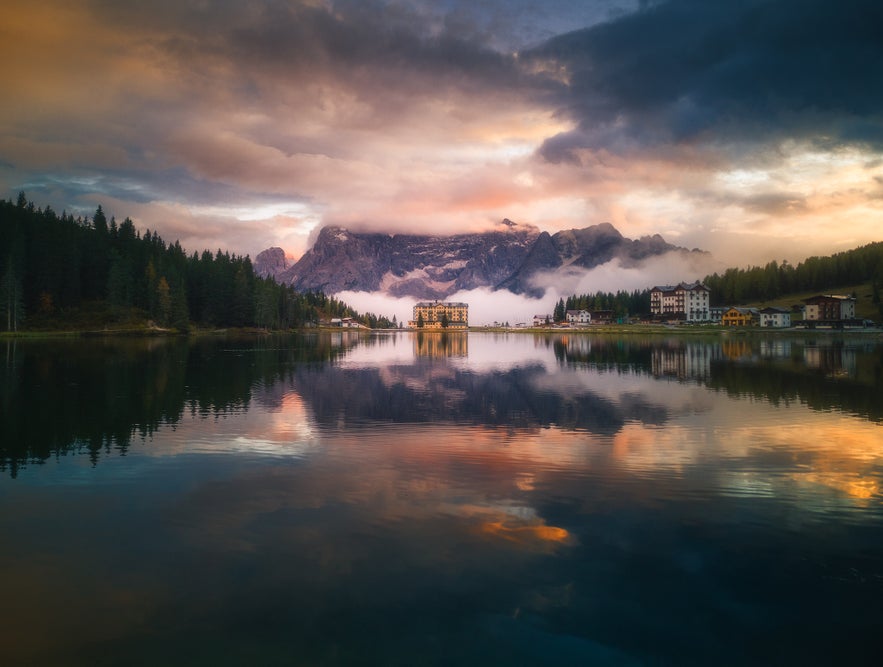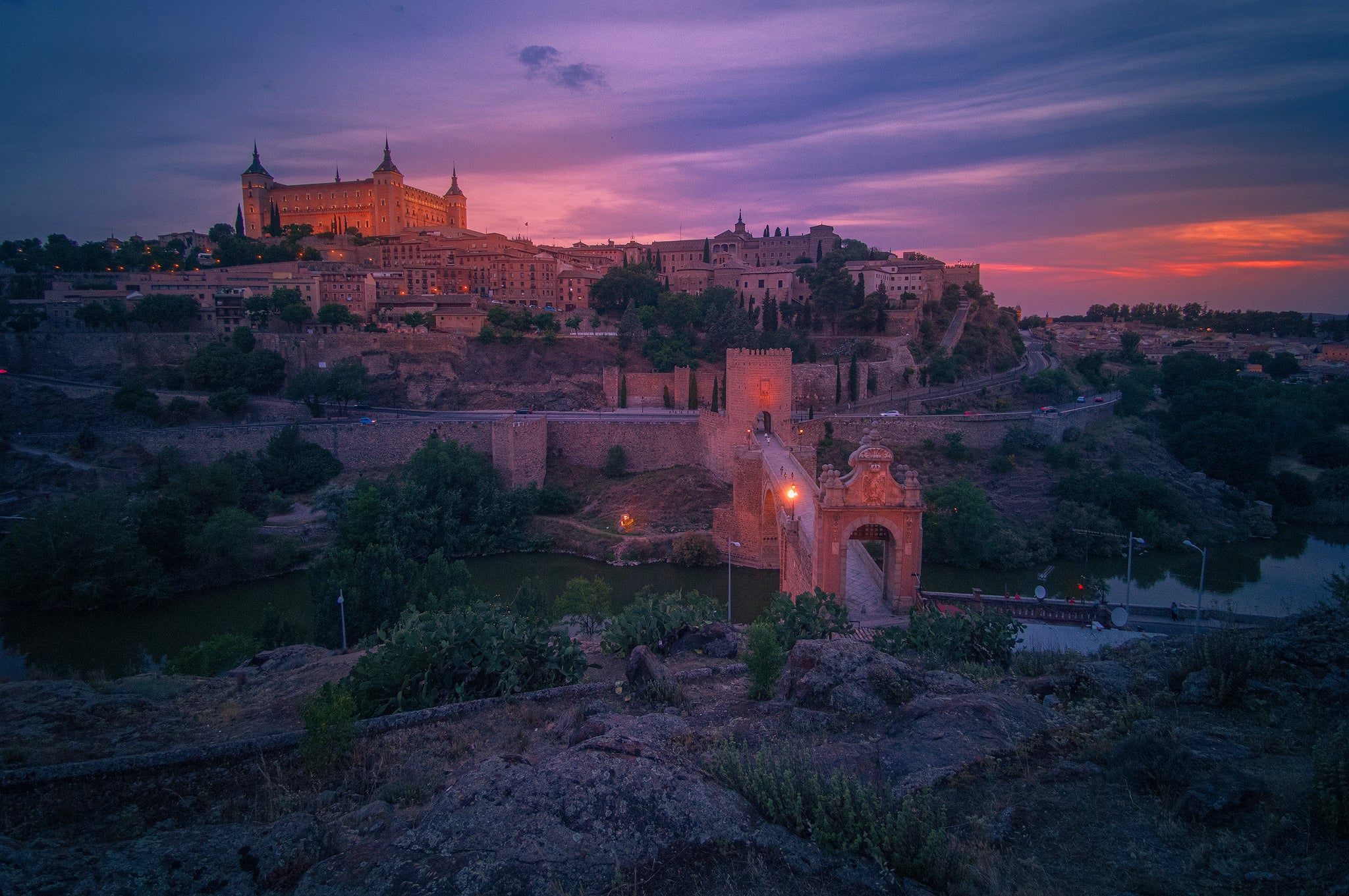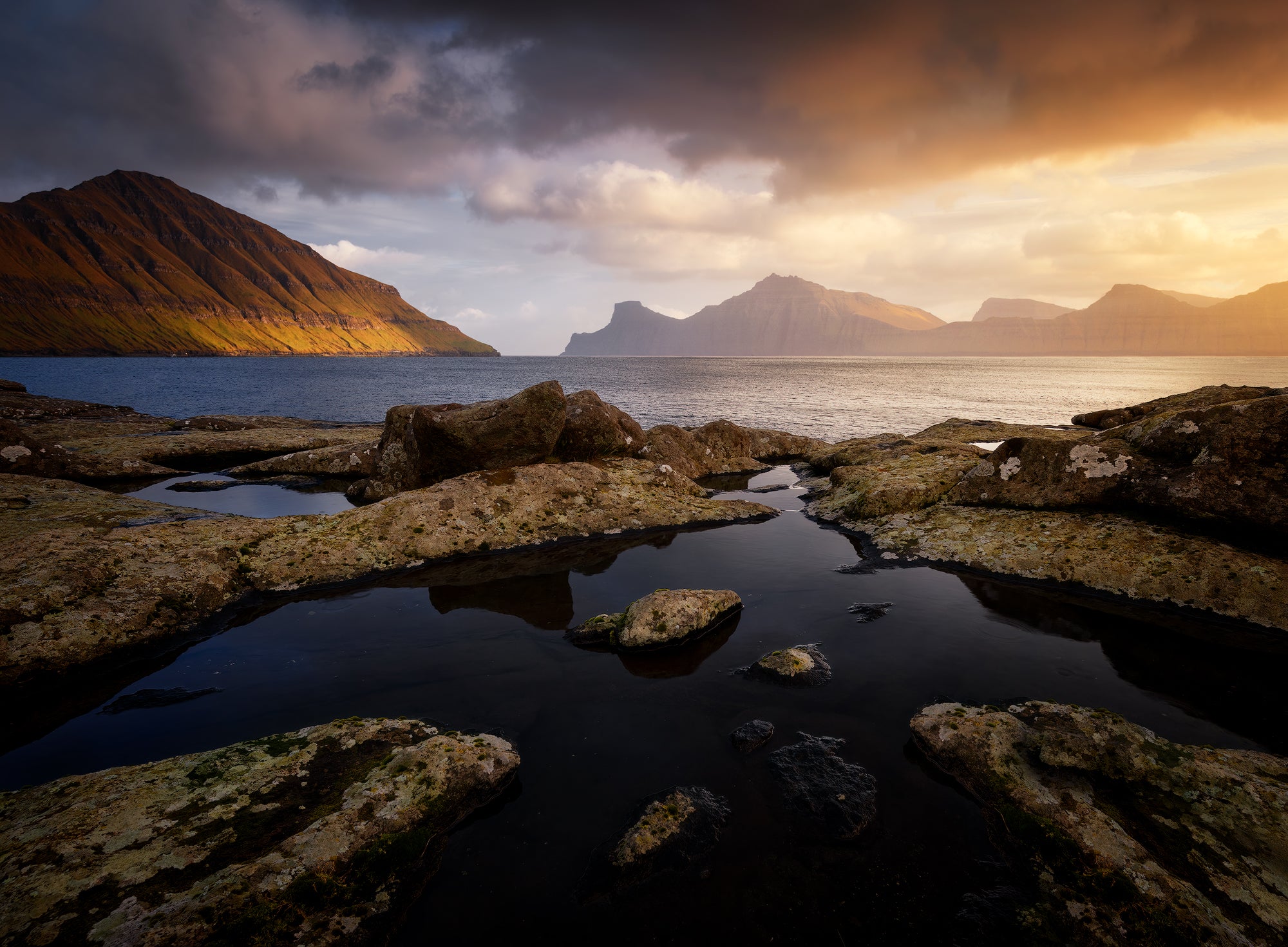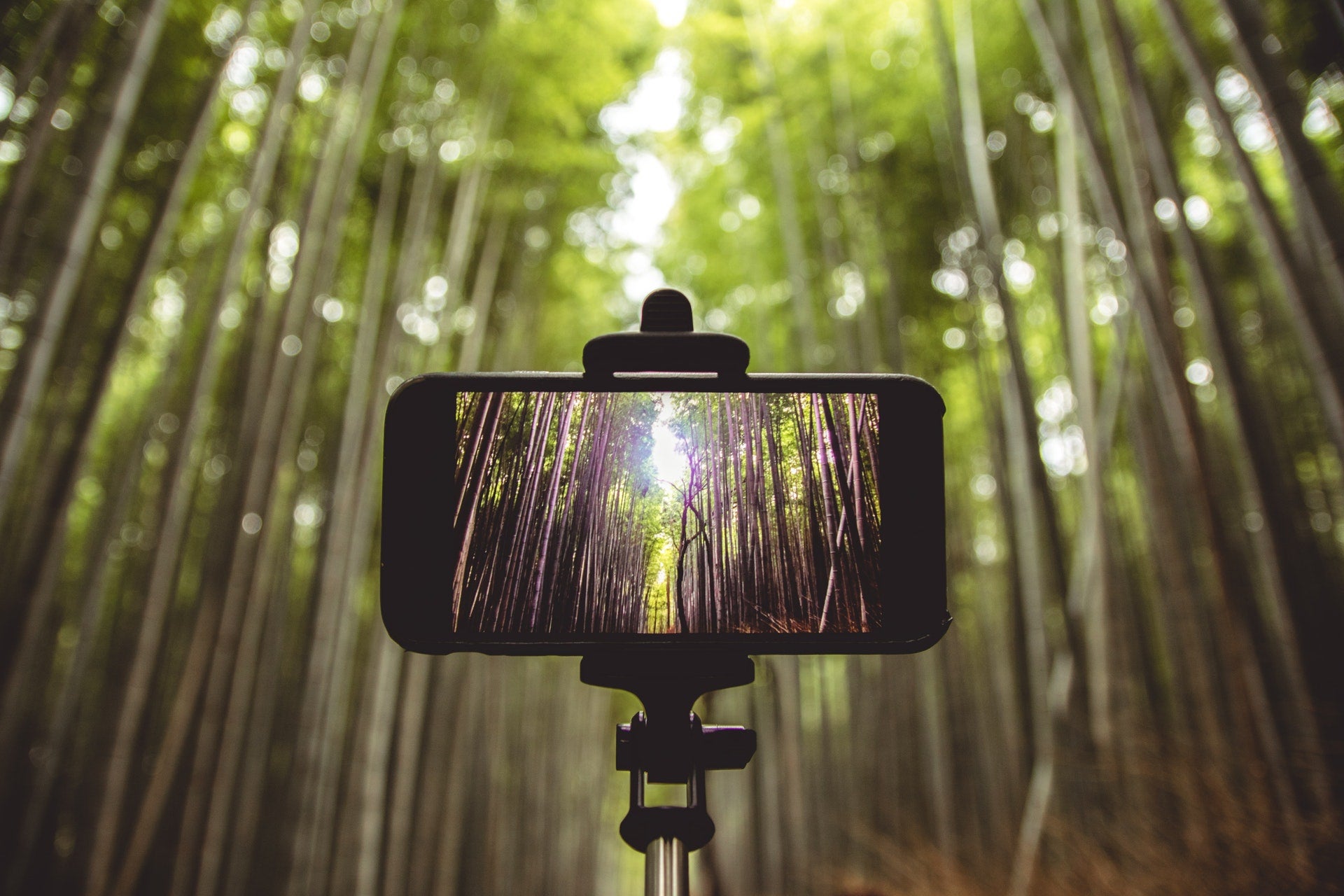
If someone had asked me a couple of years ago about smartphone photography, I would have been really surprised. The devices at the time had fixed lenses, small sensors and their performance was awful in low light conditions. By low light, I don’t even mean at music concerts. In fact, the files were awful even for situations such as sunrises and sunsets.
- Check out these 8 Awesome Tips for Landscape Photography Using a Smartphone
- Learn How to Become a Professional Landscape Photographer
Recently though, things have changed, especially in the last two years. There are so many improvements being made to smartphone technology that mobile phones have revealed themselves to be an important tool in landscape and nature photography. In this article, we’ll take a look at how you can start taking landscape photographs with your smartphone and the best ways to make your mobile phone photos look amazing.
How to Choose the Right Smartphone for You
Ability to Shoot in RAW
There are a few things to look out for when in search of the ideal smartphone for you. The most important thing is the ability to shoot with RAW files. If you really want to be able to do something with your photos, such as editing and printing them later, then being able to shoot in RAW is absolutely essential.
RAW files contain more information than JPEG files. With smartphone photography, the difference between the quality of a RAW and JPEG is even more noticeable than with your average Canon, Nikon or Sony DSLR. However, not all smartphones are capable of shooting in RAW, so be sure to check the specs when you’re on the hunt for a new mobile phone.
 Being able to shoot in RAW means you can edit your photos better. Photo by: 'Roberto Pavic'.
Being able to shoot in RAW means you can edit your photos better. Photo by: 'Roberto Pavic'.
Battery Life
Another thing to consider is the battery life. Ideally, you’ll want a smartphone that works at 4.000 mAh or even better. The reason for this is that when you're shooting with a smartphone, especially during the day, you’ll want to have the brightness of your screen turned up to the maximum to be able to see what you’re shooting. Turning up the brightness can drain your battery very quickly.
Phone Memory and Storage Size
There are huge differences in price between models depending on the storage and you might find yourself paying significantly less for a phone with 64GB of storage as opposed to one with 256GB. There’s no need to splash out on the most expensive option though, as 128GB should be enough to store photos from a couple of trips.
My advice is to download your photos from your smartphone to another storage device such as a hard drive after every shoot, much as you would with a normal memory card in a DSLR camera. This will ensure that you’ll have enough memory on your phone for new photos on your next trip.
Megapixels
While the megapixel count on a smartphone is important in landscape photography, a high megapixel number doesn’t automatically mean that you’ll be able to take amazing pictures. The key to taking great photos using your smartphone is actually in the size of the camera sensor – the bigger the sensor, the better your photos will be in terms of quality.
Lens Aperture
Most in-built mobile phone cameras come with a wider aperture (lower f-stop). The best aperture to have for a smartphone camera is something between f/1.6 or f/1.8, as these lenses will be able to let in more light, which can help you to produce better shots in dark lighting conditions.
Flagship Models
Once a year, smartphone companies introduce their flagship models onto the market. These phones usually possess the best specifications for that company’s mobile phone technology at that moment in time. They’ll often contain the company’s best camera, their best battery, best microchips and more, which can be useful if you want to be at the forefront of developments.
 Having the newest smartphone technology can mean higher quality landscape photos. Photo by: 'Roberto Pavic'.
Having the newest smartphone technology can mean higher quality landscape photos. Photo by: 'Roberto Pavic'.
My Own Experience
I did a lot of research before investing in a smartphone for landscape photography. As a Huawei ambassador, I'm currently using the Huawei P30 Pro, a mobile phone that was built specifically for photography. In the past, I have tried other brands and models, but the Huawei P30 Pro has given me a lot of satisfaction and lends another dimension to my shots.
The P30 Pro appealed to me with its optically stabilised lens that has an a 27mm-equivalent focal length and f/1.6 aperture. There is also a 20MP 16mm-equivalent wide-angle option, which is great for landscape photography. However, the real highlight for me was the stabilised 5x (125mm-equivalent) periscope-style tele-camera with folded optics, as well as the 10x lossless Hybrid Zoom and 50x digital zoom. This type of technology means that if I'm scouting an area for photography, then I can use this smartphone to figure out later exactly which lenses and focal lengths will be perfect to take with my DSLR to shoot in that location. It’s also useful for when an opportunity suddenly presents itself, as I’ll have the option to shoot at any length from ultra wide to super tele zoom. This means that even if I’m unprepared, I’ll still end up with a usable shot.
 The Huawei P30 Pro has a 50x digital zoom. Photo by: 'Roberto Pavic'.
The Huawei P30 Pro has a 50x digital zoom. Photo by: 'Roberto Pavic'.
Some other useful features that I like about this phone are the Light Painting mode and a Silky Water option, which allows me to shoot long exposures during the day without any filters. The Night mode also allows me to take handheld exposures of up to 8 seconds without the need for a tripod.
Principles of Photography with a Smartphone
Landscape photography with a smartphone is quite similar to using a normal digital camera. All the principles that you will have learned in standard photography can be applied to shooting with a smartphone.
For example, before you start shooting, make sure to check your settings. Set your camera to record images at the highest possible resolution in order to retain quality. Don't shoot at 10MP if your camera is capable of 40MP, as once you’ve taken the shot, there’ll be no turning back.
If your phone allows it, set it to shoot in RAW. This will give you more flexibility when editing your photos later. However, just be aware that your phone will store both the JPEG and RAW files, which can take up a lot of space on your phone. To give you an idea, the files on my smartphone are almost 80MB in size, which is 2 or 3 times larger than the RAW files taken with my DSLR camera! As such, remember to delete any unnecessary and unwanted pictures after taking them.
Another thing to be mindful of is that most smartphones have only digital zoom. This differs from optical zoom in that rather than actually changing the focal length of the lens, the camera is enlarging the pixels of the image instead. The result will be an image that lacks details, so try to avoid using this. It’s better to shoot in full resolution without any digital zoom and then to crop the photo in post-production – the quality of that file will be better than the quality of the photo taken with digital zoom.
As with any type of photography, it’s always best to shoot in good lighting conditions. While it's okay to shoot during the day, getting up early in the morning for sunrise or staying out for sunset will give your images a spectacular boost. If the weather is bad, then try to capture the mood and atmosphere instead.
For landscape photography, composition is often the key to making a great shot. Some things to consider include:
-
Using the rule of thirds
-
Creating a centred composition and symmetry in your photos
-
Using an interesting foreground to create a sense of depth in the scene
-
Using leading lines to guide the viewer’s eye through the photo towards the most important elements
-
Making use of patterns and textures
-
Framing the scene with arches, a tree trunk or something similar
-
Looking out for different perspectives
Just remember that with a smartphone, you will be much more mobile than with a camera and tripod, so try to use that to your advantage when searching for a composition in the landscape.
 The Rule of Thirds is a great compositional tool for landscape photography with a smartphone. Photo by: 'Roberto Pavic'.
The Rule of Thirds is a great compositional tool for landscape photography with a smartphone. Photo by: 'Roberto Pavic'.
Tips and Tricks for Using Your Smartphone to Make Amazing Landscape Photos
1 - Turning on the grid to make use of the compositional Rule of Thirds
Most smartphone cameras have an Assistive Grid, which can help you to get a much better composition using the famous Rule of Thirds. You can usually turn this on in the Menu or Settings.
Once it’s on, try to place the most important elements of the photo, or your subject, in one of those thirds or along one of the lines. If the sky is the most interesting part of your photo, then put the horizon on the lower third.
On the other hand, if you have some really good leading lines and the foreground is more interesting, try putting the horizon on the upper third instead. Sometimes, you’ll end up with a composition that includes a reflection, during which you may want to go 50-50 for the horizon line instead.
While the Rule of Thirds will always help you to take eye-catching and well-balanced photos, it may be broken for even more spectacular shots.
 How to turn on the assistive grid function with the Huawei P30 Pro smartphone. Photo by: 'Roberto Pavic'.
How to turn on the assistive grid function with the Huawei P30 Pro smartphone. Photo by: 'Roberto Pavic'.
2 - Making sure the horizon is straight
Assistive Grid lines on the screen are not just great for helping you to compose, but they are also fantastic for using as a horizontal level. You can take advantage of them to make sure that your horizon is straight. Some smartphone cameras even come with a horizontal level on-screen.
3 - Focusing
When shooting the landscape with your smartphone camera, it’s important to adjust your focus so that it’s actually on your subject. A lot of people forget to do this and simply point and shoot without focusing.
For complex scenes with lots of information in both the foreground and the background, you can simply focus on the first third of the scene by pressing there with your finger. This will give you maximum depth of field and will ensure that a larger part of the scene will be well-focused.
Focusing at larger zoom lengths can be particularly difficult when you’re holding a mobile phone. Some of the latest phones allow for 50x digital zoom, a magnification which can be very hard to shoot at without some degree of shake. To use this level of zoom, simply mount your camera to a mini tripod, set the timer to 2 seconds (or more), tap the screen to focus after composing your shot, and then press the shutter button. The phone will take a photo after a short delay, which will help you to avoid camera shake for much sharper results.
 Focus on the first third of the scene. Photo by: 'Roberto Pavic'.
Focus on the first third of the scene. Photo by: 'Roberto Pavic'.
4 - Colour profile
On some smartphones, you can choose between Standard, Vivid or Smooth Colour profiles for photos. Choose something that suits you, but keep in mind that if you are going to edit the photos later on, then it’s best to leave them on Standard and to do your colour changes in post-production.
 Make sure to choose a colour profile before taking photos with your smartphone. Photo by: 'Roberto Pavic'.
Make sure to choose a colour profile before taking photos with your smartphone. Photo by: 'Roberto Pavic'.
5 - Clean the lens
Last but not least, the most important tip is to clean your lens! Most of the time, your smartphone is being kept in your pocket, or even worse, in your hands. These places are not clean can result in dirt, grease, and fingerprints all over your lens and screen. If you don't wipe the lens, the dirt and fingerprints will blur your photos, lead to decreased contrast and even unwanted flare. So before you start to shoot, make sure to clean the lens and screen of your smartphone with a soft cloth. Be careful while you’re doing it, as you don't want to scratch the lens.
 Clean any drops of water or dirt from the lens before taking a picture with your smartphone. Photo by: 'Roberto Pavic'.
Clean any drops of water or dirt from the lens before taking a picture with your smartphone. Photo by: 'Roberto Pavic'.
Now that you’ve got the lowdown on how to choose the best smartphone that works for you, you’ll be ready to head out there and start taking amazing landscape photos. Just remember that landscape photography with a smartphone is similar to shooting with a DSLR, though much lighter and with less gear to carry. Follow the tips above and you’ll enjoy it even more, with a bigger and better display than a tiny LCD to be able to see your results immediately in the field!
About the author: Roberto Pavic is a landscape photographer based in Croatia. You can find more of his work by following him on Facebook or Instagram.
Thinking of leaving your DSLR at home? Our photography tours and workshops in Iceland are smartphone friendly! Practice your landscape photography skills with your mobile phone on our 3 Day Summer Photo Workshop, capturing all the spectacular sights of Iceland's famous South Coast.











